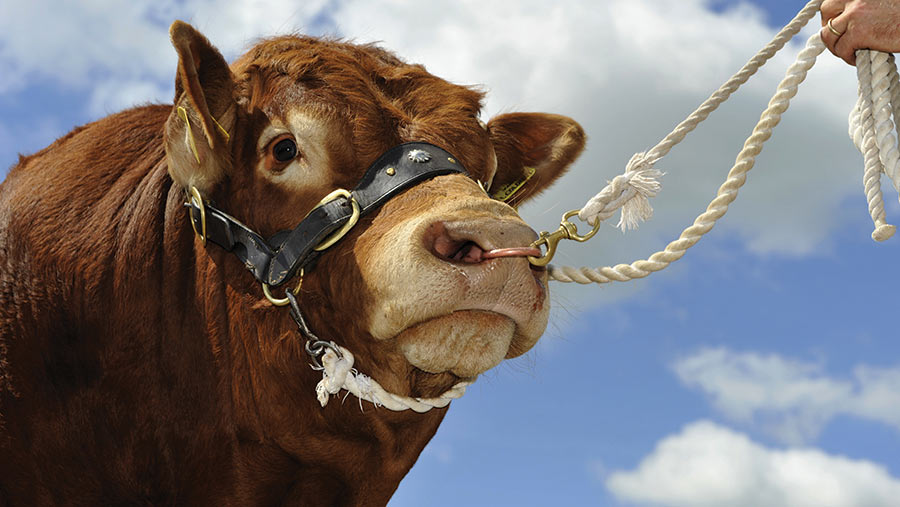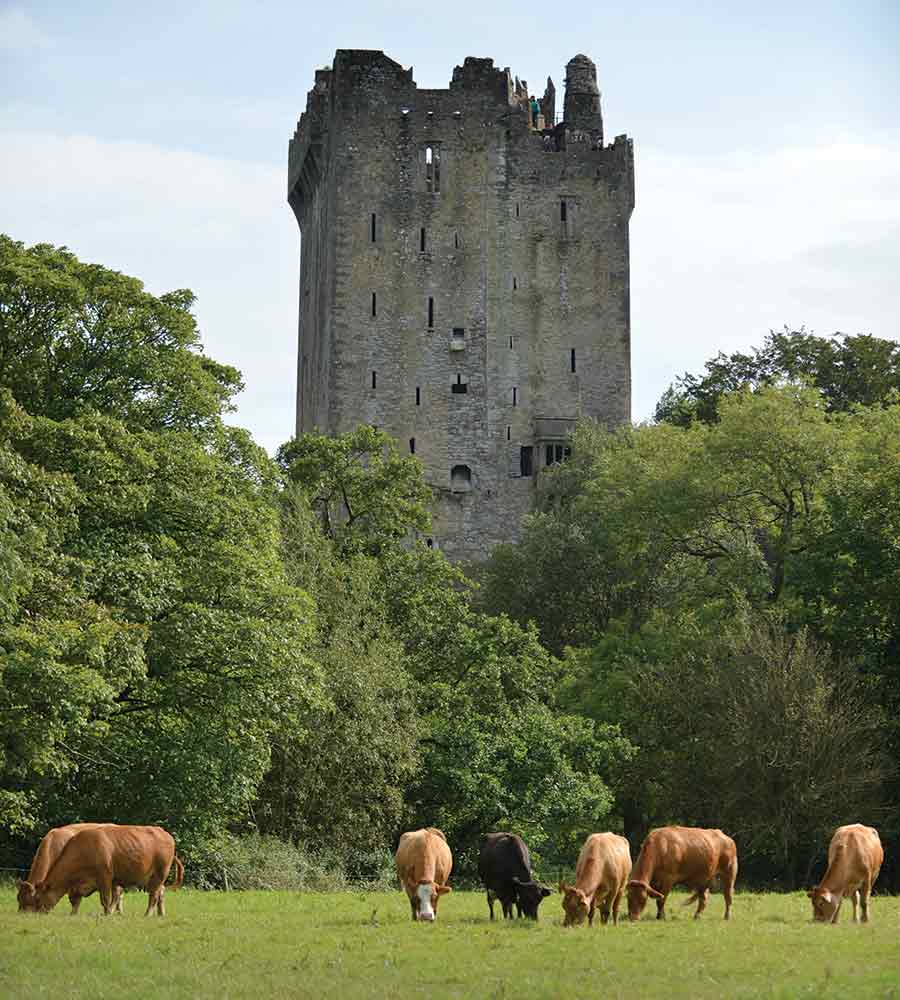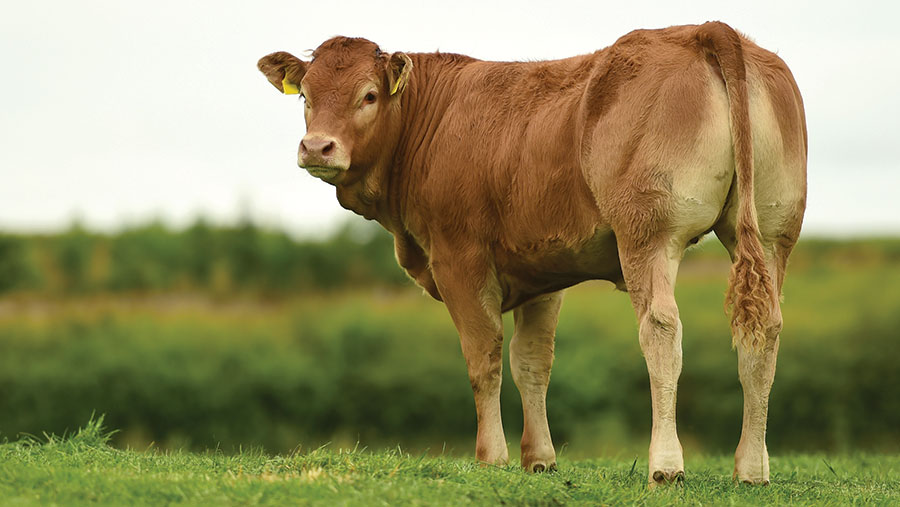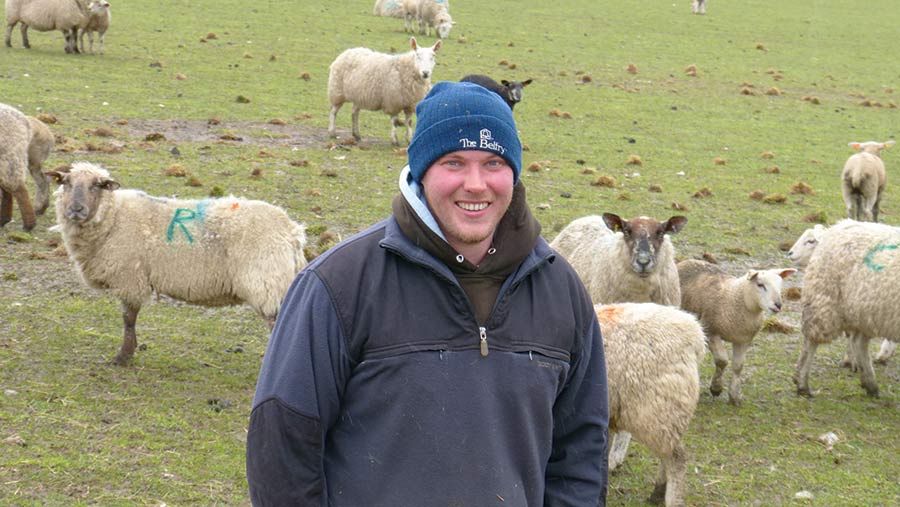Lim-gate: What next for EBVs?
 © FLPA/Shutterstock
© FLPA/Shutterstock The exposure of errors relating to the registration of birth dates and parentage of cattle last year brought into question the legitimacy and accuracy of data feeding into Estimated Breeding Values (EBVs).
Some breed societies have already stepped up farm verification work since the errors came to light.
This has added to an already increasing level of scrutiny of growth rate and herd records, made possible by computerised searches and data ‘triggers’ when looking at growth data or British Cattle Movement Service (BCMS) records.
With UK livestock genetics at an interesting juncture – the national livestock data co-ordination project, the Livestock Information Programme (LIP), is currently under development – Farmers Weekly asked what the UK can learn from other corners of the livestock industry.
Farmers Weekly spoke to Irish Cattle Breeding Federation (ICBF) animal evaluation analyst Pat Donnellan, AHDB beef breeding products manager Alex Brown and Limousin cattle breeders to find out what needs to be done to improve the EBV system, to make EBV data recording more robust.
See also: Myth buster – the BBC’s anti-meat programme examined
Five lessons from Ireland
Commercial data has driven national cattle EBVs in Ireland since the establishment of the ICBF in 2000.
Because of cross-sector co-operation, all data from milk recorders, beef farms, breed societies, AI companies, abattoirs and national health schemes is pooled and processed by the ICBF to produce EBVs.
This co-ordinated approach is currently not possible in the UK, but once the statutory elements of LIP are in place (expected in the next year) this could then be developed in the future as the UK equivalent to the ICBF.

Blarney castle © ILCS
1. Commercial data
The ICBF calculates EBVs using 1.6 million carcass records a year on weight grade and value.
More impressive is its 7 million cattle movement records a year, which include information on animal weights, ages and prices from live marts and 2.3 million bovine viral diarrhoea (BVD) records.
Why it strengthens EBVs
The sheer amount of data coming from commercially reared progeny of pedigree stock increases the reliability of EBVs and means they can be produced on crossbreds. The data is seen as more reliable than pedigree records alone.
How could the UK change?
Change is already happening rapidly in the area. In the recent years, carcass data evaluations from commercial abattoirs has gone from the thousands to the millions.
This is due to AHDB and Hybu Cig Cymru-funded work as part of the National Beef Evaluation programme.
This followed work instigated by the British Limousin Cattle Society (BLCS) in partnership with major abattoirs and Scotland’s Rural College (SRUC), which got carcass data to be fed into EBVs.
Currently, carcass data can be used to generate the following EBVs:
- Carcass traits: Weight, fat class, conformation, days to slaughter and average daily carcass gain from abattoirs.
- Herd management traits: Age at first calving, calving interval, longevity, calf survival from BCMS.
Improvements can be made in EBV reliability if more farmers record the sire on passports where possible. The AHDB’s #Shoutaboutthesire campaign is trying to increase recording.
The April 2020 genetic run used 2.8m records to generate EBVs, which was 600,000 more than the year before.
However, farmers had not recorded the sire on a total of 5.3 million animals and so couldn’t be processed to generate EBVs for bulls. If it was mandatory, uptake would have to increase.
In future, there could be scope to draw in more commercial data and records to influence EBVs within the LIP system, but the industry would have to agree to work collaboratively.
2. Simple rating system
Irish cattle are rated on a five-star Euro efficiency index, similar to a washing machine or fridge.
A five-star bull is the best and one star is worst. This is in addition to a numerical index score. Bulls are star-rated for terminal and maternal traits.
Why it strengthens EBVs
The star system is easily displayed on a board at a market or in a catalogue. Numerical indexes change and are recalibrated.
How could the UK change?
Rather than having one system, the UK has several evaluation services (i.e. Signet, Breedplan, Taurus), all with slightly different ways of ranking and displaying data.
All systems work on a numerical index, which is recalibrated every few years.
A star system could be adopted by the UK in the future, although there are arguments for and against. One possibility could be a carcass trait rating to easily identify cattle that have the genetic potential to finish better.
3. Subsidy support for genomic testing
Since 2015, Irish beef farmers have been able to enrol in the beef data and genomic programme (BDGP).
For a payment of roughly £82 a cow, farmers must:
- Record calving ease, calf vitality and cow docility, milk score and culling reasons
- Genotype animals as requested by the ICBF
- Meet quota targets for using four- and five-star bulls and breeding certain numbers of five-star females
- Complete a carbon audit and annually submit data into it by 31 October
- Allow ICBF to use data in genetic evaluations.
How this strengthens EBVs
Having a direct payment has accelerated the adoption of genomics, which increases the reliability of EBVs. About 580,000 cows are enrolled into the scheme – more than half the national herd.
This means people know and trust EBVs and star ratings, and it has become part of day-to-day farming language.
How could the UK change?
UK farmers do not get a direct subsidy payment to invest in performance recording or cattle with EBVs. The prospect of this is not likely, although there could be scope for some genetic beef projects to be funded in the future.
4. Herd inspections and weighing
A growing number of pedigree breeders have calf and cow weights assessed by independent ICBF auditors through the Whole Herd Performance Recording Programme (WHPR) annually – an independent herd weight and data verification programme.
Every animal on participating farms is weighed by independent ICBF auditors.
How WHPR works
- A typical fee is £130-175 (£40 call-out fee and £4.30 a head thereafter) paid by the farmer
- Five independent weighers operate around the country
- Any calf growing at more than 2kg/day is reweighed later to see if the weight gain is genuine
- Animals are given the WHPR stamp in catalogues and sale literature
How this strengthens EBVs
This means cheats are caught early and it gives honest breeders a marketing tool. The WHPR stamp can be put in catalogues to testify the accuracy of figures.
Data is verified on a significant number of herds. About 12% of pedigree herds (35% of the pedigree cows) are in the scheme. This amounts to 600 registered herds of the 5,000 pedigree Irish herds.
How can the UK learn from this?
No national independent scheme exists in the UK, although different breed societies have their own formalities and ‘triggers’ to investigate herds.
A growing number of breeders are calling for such checks to be standardised.
On-farm spot checks could be carried out, but without funding and a national, independent organisation such as the ICBF, it could be difficult to run.
5. One system
The ICBF runs all bull proofs and publishes all indexes and catalogues.
Why this strengthens EBVs
With everything published in one place and by one organisation, there is a consistent voice and format for displaying EBVs.
How can the UK learn from this?
A varied system operates in the UK whereby indexes and sales literature are produced by auction mart companies, breed societies, Breedplan, and Signet and Taurus.
All organisations use the bar chart format to display information, but there are differences. For example, Breedplan’s eye muscle area is a different trait measurement to Signet’s muscle depth.
A standard system would make things clearer and may be possible under the LIP.

Every 50th pedigree Limousin calf born is genotyped
Farmers Weekly says
Michael Priestley, Livestock reporter
Since Limousin passport errors came to light in 2018 and it subsequently emerged that parentage of Ballinloan Jagerbomb was incorrect, it’s rocked the industry to its core.
Rightly so, the British Limousin Cattle Society has ramped up DNA tests, weighing and herd inspections, but it’s too little too late for breeders who have been hit financially.
Such activity forces them to lose interest, give up or switch breeds. It also undermines peoples’ trust in EBVs.
All breed societies need to take a hard stance to stamp out cheating. Once caught, cheating members should be kicked out of societies for good – no excuses.
We also need co-ordination from the top down. A UK version of the ICBF in which commercial data points flow into a central and independent evaluation service for all UK cattle would help produce reliable EBVs that farmers can trust.
One voice, one system and one ethos. Hopefully, the Livestock Improvement Programme can act as the keystone for such a vision.
Irish Limousin V The British Limousin Cattle Society |
||
|
Check |
Ireland | Britain |
| Random calf check | ✔ Every 50th calf born in the society | ✔ Every 200th calf born |
| Birthweight check | ✔ Every 50th calf born in the society | ✔ Every 200th calf born in the society |
| Random calf genotyping | ✔ Every 50th calf | ✔ Every 200th calf |
| Mandatory Stud Bull DNA test | ✔ | ✔ |
| Mandatory female DNA test | ✔ | ✔ This has been introduced recently, according to BLCS |
| Bull growth rate trigger | ✔ 1.7kg/day | ✔ 1.7kg/day |
| Heifer growth rate trigger | ✔ 1.5kg/day | BLCS said there was a check but would not disclose the trigger point |
| Independent random farm/herd inspections | ✔ | ✔ Ramped up recently |
| Sources: Breed secretaries from both societies | ||
Can recording be accurately done ‘in-house’?
Sarah Alderton reports on Innovis:
As one of the country’s leading suppliers of performance recorded, forage-reared rams, Innovis collects data from 8,400 ewes at lambing, which includes animals from 23 breeding partners across the UK.
Ensuring those records are accurate is vital so that the breeding stock they sell meets buyers’ expectations, explains Innovis geneticist Dr Janet Roden.
We find out what steps they are taking to ensure accuracy.
Innovis: the numbers
- 850 ewe nucleus flock at Aberystwyth
- 23 breeding partners
- 8,400 ewes recorded at lambing
- Pedigree database of more than 100,000 records
Recording in the Innovis nucleus flock
All ewes lamb outside and are EID-recorded. Lambing data is recorded using a Psion.
Because of the hands-off approach ewes are drifted out of dedicated lambing fields and each week ewes and lambs are marked with a specific colour, so they know the birthdate of lambs to within a week.
Data collected includes:
- Four weeks old: All ewes are foot-scored. Lambs are also DNA/EID tagged. This is done at four weeks to ensure all records of ewes needing assistance, mis-mothering or other problems are tagged and the misdemeanour is recorded and fed into the maternal EBVs.
- Eight weeks old: Lambs and ewes are weighed and ewes are body-condition scored. This gives a measure of maternal ability.
- Post-weaning: Lambs are ultrasound scanned at 40kg for muscle and backfat. This is conducted in-house by a trained Signet-accredited scanner. Top-performing rams in Innovis’ terminal sire lines (Abermax and Abervale) are drawn and sent for CT scanning.
- September: All ewes have jaws and teeth scored and will be weighed and condition-scored before tupping.
- December/January: Individual faecal egg counts are taken. This feeds into a faecal egg count EBV. Mob FECs are used to ensure there is a worm challenge prior to this.
Recording on breeding partner farms
To minimise subjectivity from recording, Innovis has tightly defined definitions for many traits including lambing ease, lamb vigour and maternal behaviour.
Data verification
All breeding partners must send their data electronically at the end of lambing, which is checked.
The checks include:
- Lambs born are tallied against the number of lambs scanned.
- If a ewe scanned as having three lambs, but only reared one, Innovis will interrogate lamb survival data.
- Breeders are sent a data-quality report outlining how well their data has been recorded and where they can improve.
- When Innovis calculates breeding evaluations, it takes flock and evaluation group into account so it can pull out and remove any management/environmental effects from the data.
- Data summaries, including key performance indicators (KPIs), are returned to the breeding partners to aid the management of their flock.
- Any queries are made after Innovis has been sent the lambing data so the farmer can address them at the eight-week check.
- Any outlying values – such as average daily liveweight gain – are analysed and anomalies are clarified.
James Drummond, Lemmington Hill Head Farm, Alnwick, Northumberland

James Drummond records data as part of the Innovis system
James Drummond is a breeding partner with Innovis. His commercial grass-based system uses EID and, like all breeding partners, runs on a passion for performance recording.
He started implanting embryos into his flock in 2014 and has now implanted more than 1,800.
Lemmington Hill Head
- 220ha mostly in 2ha paddocks for rotational grazing
- 1,600 Innovis ewes, including ewe lambs
- This includes 1,040 Aberfield ewes and shearlings, 110 Abertex shearlings, 300 Aberfield ewe lambs, 110 Abertex and Aberdale ewe lambs
- Scanning targets: ewes 195%; shearlings 175%, ewe lambs 125%
- Losses: 12% from scanning to weaning
The farm records similar data to that collected in Wales by the Innovis nucleus flock, but the key differences include:
- Mr Drummond does single sire mating for one cycle, with sweeper rams used after one cycle. Replacements are only kept from ewes that conceive in the first cycle. The rest go into a B flock.
- All lambs are tagged and recorded at birth. At lambing, ewes are outdoors during the day and brought in at night so the shepherd on duty can catch and tag the lambs at birth. If parentage can’t be verified, the lambs will not be kept for breeding.
- Mr Drummond also records any lamb losses and the reason for them all.
- A post-mortem is carried out on every animal that dies on the farm by an independent vet.
This information is now being used to produce a productive life EBV.
Mr Drummond says: “Data is important for carrying our flock forward, as all the data feeds into our breeding decisions. We are only cheating ourselves if we don’t collect the correct data.
“In 2019, we produced 20t more lamb compared with 2018, due to improved survival and growth rates.”
